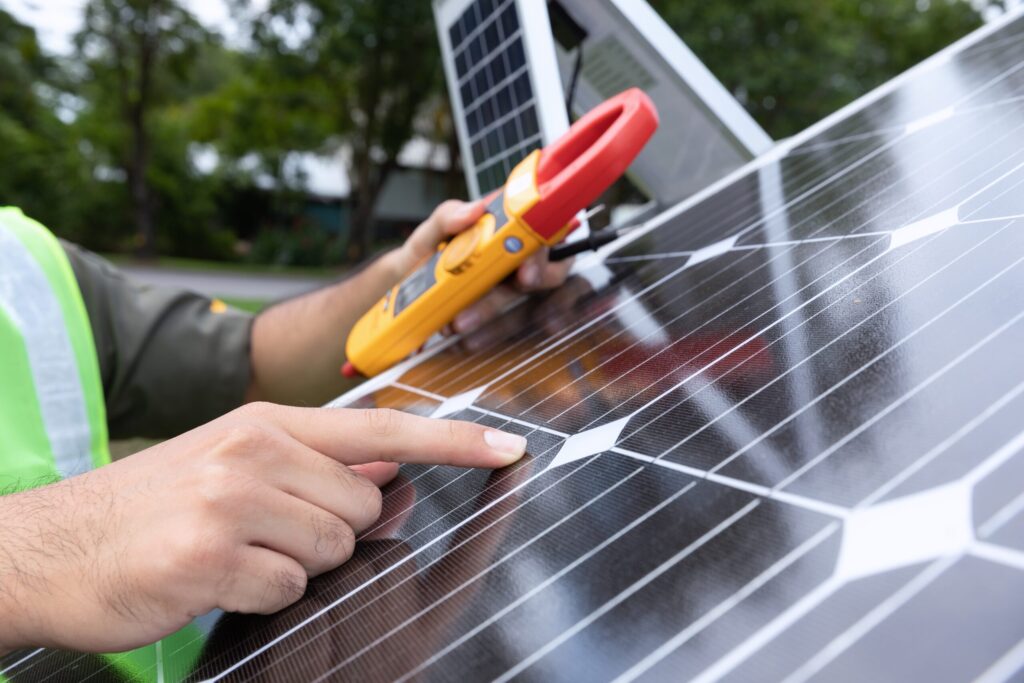Renewable energy is gaining more recognition globally due to its long-term financial benefits and significant environmental impact. The question many homeowners often have is, “How does this renewable energy for homes work?” Understanding the concept behind this rapidly developing field can be both intriguing and rewarding. In this article, we will unpack the fundamentals of renewable energy, the different types available for homes, the process involved in harnessing these energies, and what the future holds for renewable energy in the residential sector. Keep reading to expand your knowledge of sustainable home power supply.
Understanding the Basics of Renewable Energy
Renewable energy refers to energy derived from natural resources that replenish themselves over time without depleting the Earth’s resources. This form of energy presents several benefits, including reducing the reliance on fossil fuels, lowering energy bills, and minimizing the impacts of energy production on the environment.
The use of renewable energy is not a new concept; however, it has gained more traction in recent times due to the growing concern for the environment. It is an innovative approach to the energy needs of the 21st century, promising sustainability and resilience in a world grappling with climate change.
In residential settings, renewable energy can be sourced directly from solar, wind, or hydro systems installed on the property. Numerous homeowners have already started implementing and enjoying the payback of such an investment. For instance, the shift towards renewable energy in Pennsylvania is a great example.
Furthermore, the energy sector’s legislative efforts, technological advancements, and financial incentives also make the transition to renewable energy more feasible for homeowners. The origin of your home’s energy will significantly impact your household’s carbon footprint, the community, and the planet as a whole.
Different Types of Renewable Energy for Homes
There are various types of renewable energy that homeowners can exploit. The most popular include solar, wind, and hydro energy. Each type has its own set of advantages and is applicable depending on the geographical location and available resources.
Solar power, which taps the sun’s energy, is the most common form of renewable energy for homes. This is due to its relative simplicity to install and the abundant availability of sunlight in most parts of the world. Residential solar energy systems generally include solar panels, an inverter, and occasionally storage batteries.
Wind energy is also advantageous, especially in areas with significant wind resources. Wind turbines convert wind energy into electricity, which homeowners can then use or store. Residential wind energy systems can supplement solar systems or operate as the primary energy source, depending on the location.
Hydroelectric systems are another option for homes positioned near moving water. These systems convert the kinetic energy of flowing or falling water into electricity. Though less common for individual homes, they offer a consistent power supply provided there is a reliable water source.
The Process of Harnessing Solar Energy in Homes


The process of harnessing solar energy in homes starts with the installation of solar panels, typically on rooftops. These panels contain numerous photovoltaic cells that capture sunlight and convert it into direct current (DC) electricity.
This DC electricity then moves to an inverter, where it is transformed into alternating current (AC) electricity, the type used in homes. Any excess electricity generated by the solar panels can be stored in batteries for use during the night or on cloudy days.
Solar panels are a cost-effective renewable energy option since they require minimal maintenance once installed. Additionally, their lifespan can exceed 25 years, making them a long-term investment for homeowners.
Moreover, the installation of solar panels contributes significantly towards reducing a household’s carbon footprint as they emit no harmful gases during operation. This goes beyond the household level and greatly supports worldwide ecological conservation efforts.
Wind Electricity Generation for Residential Use


The process of harnessing wind energy for homes starts with installing a wind turbine, a device designed to convert wind’s kinetic energy into mechanical energy.
When the wind blows and turns the blades of the turbine, this mechanical energy is transformed into electrical energy by a generator located inside the turbine. This electrical energy is ready for immediate use or can be stored in batteries depending on the homeowner’s needs.
One crucial factor to consider with residential wind systems is the local wind resource, as inadequate wind speeds can limit the amount of electricity generated. Therefore, it is essential to understand the wind potential of the area before installation.
Despite the initial installation cost, wind systems offer long-term savings through reduced electricity bills, energy independence, and contributing to a cleaner environment.
The Future of Renewable Energy in Homes
The future of renewable energy in homes is promising as more people appreciate its benefits in their everyday lives. From an environmental aspect, the reduced carbon emissions offer a tangible way to combat climate change at the household level.
Technological advancements will continue improving energy efficiency and reducing the cost of renewable energy systems. Hence, making these systems more accessible to a larger portion of the population.
Government policies supporting renewable energy usage will also help stimulate this shift. By providing tax credits and financial incentives to homeowners, governments can encourage their citizens to turn to renewable energy resources.
Furthermore, utility companies are increasingly purchasing surplus energy produced by homeowners, making renewable energy a potential income-generating investment.
Altogether, understanding how renewable energy works and its diverse benefits can help homeowners make informed decisions about their energy needs. As people become more environmentally conscious, renewable energy for homes is poised for significant growth in the future.









